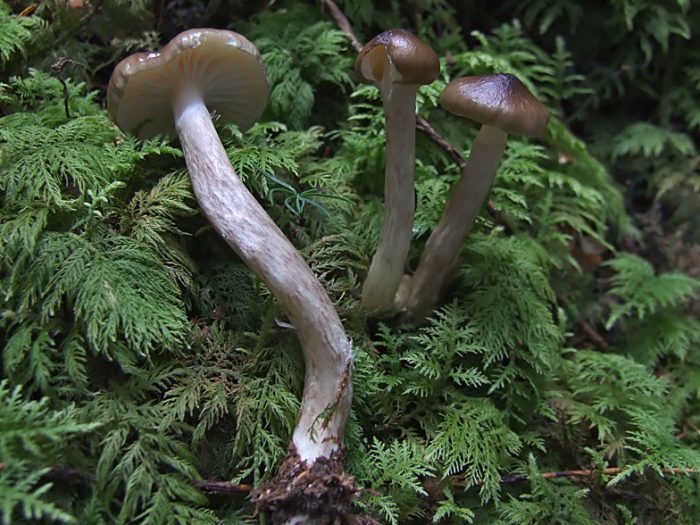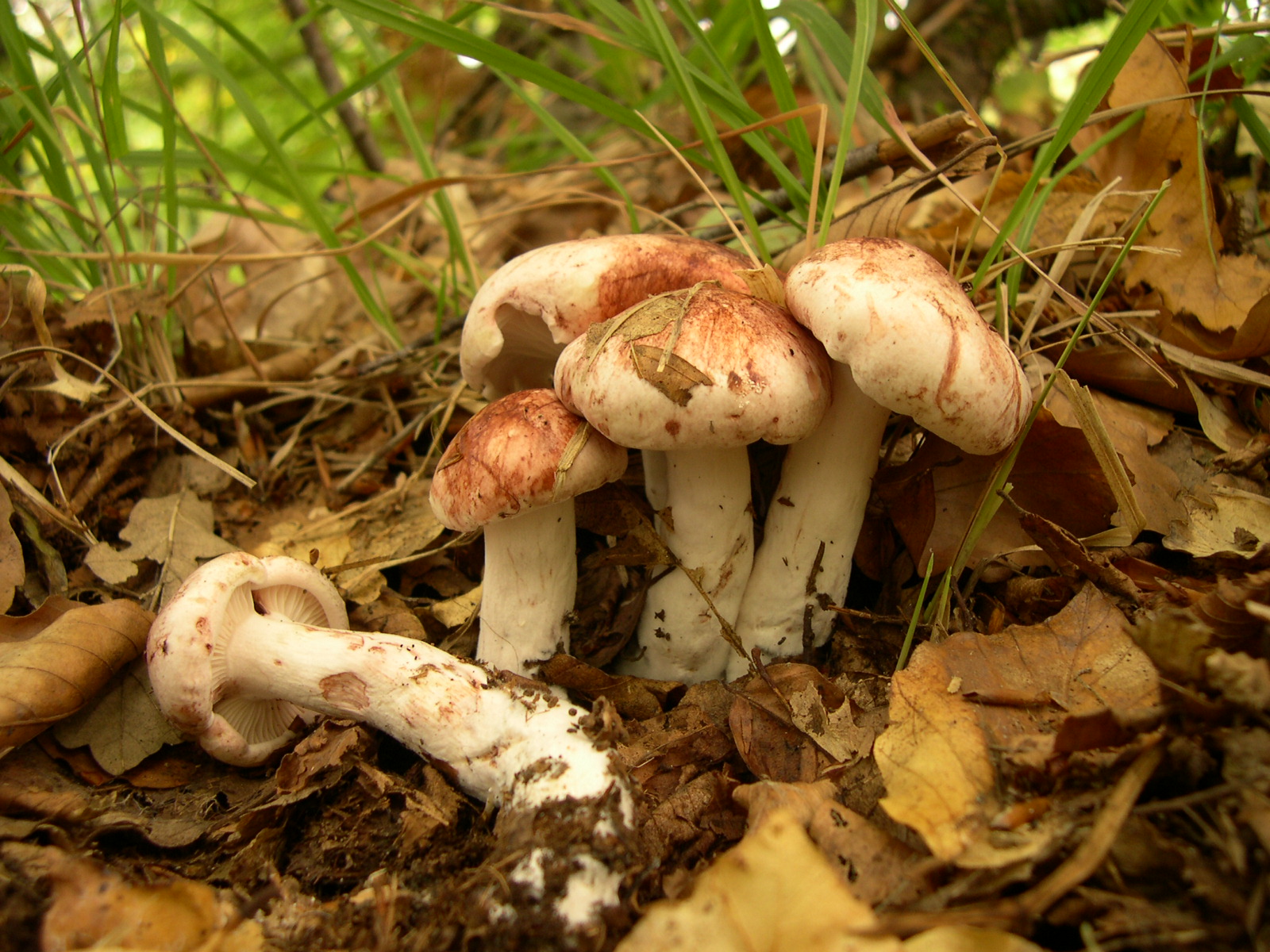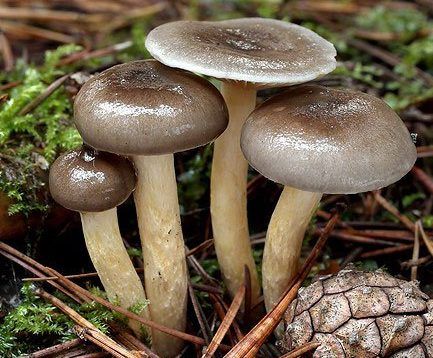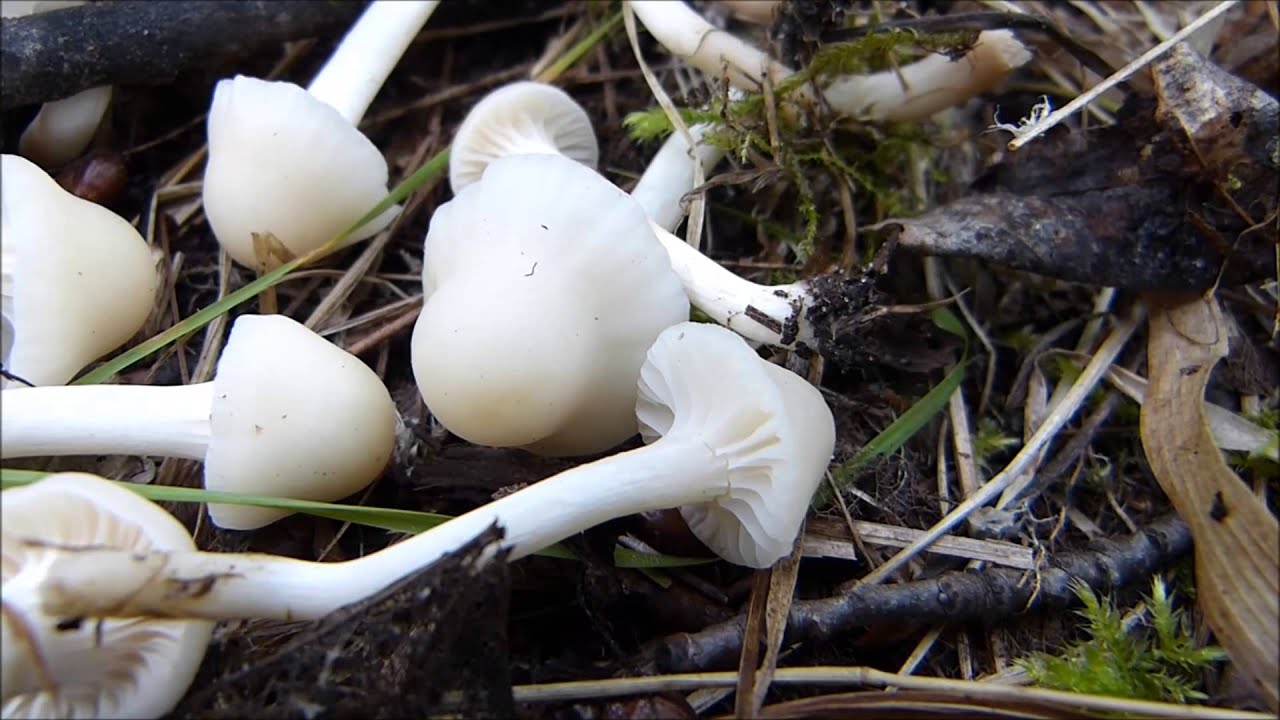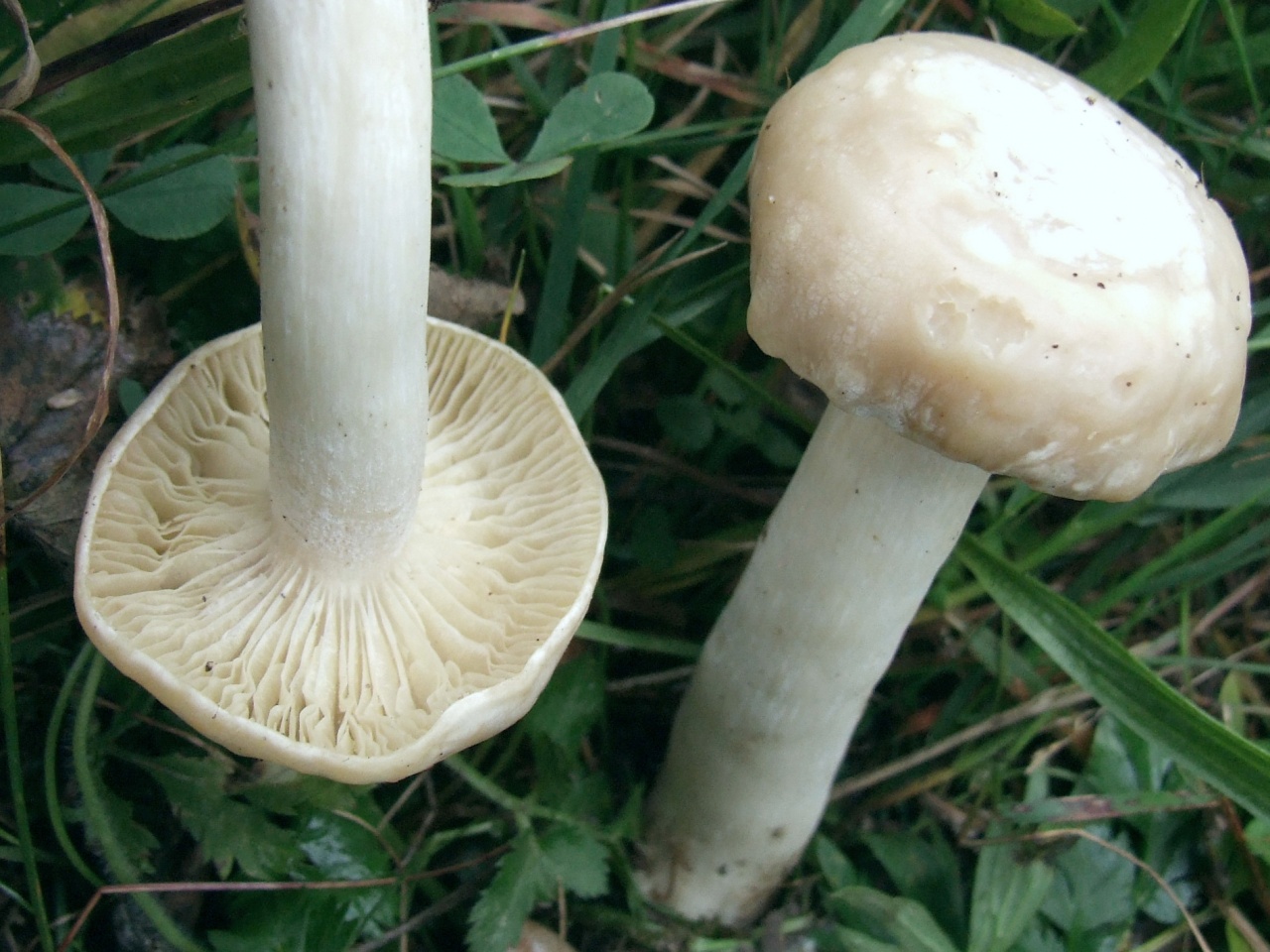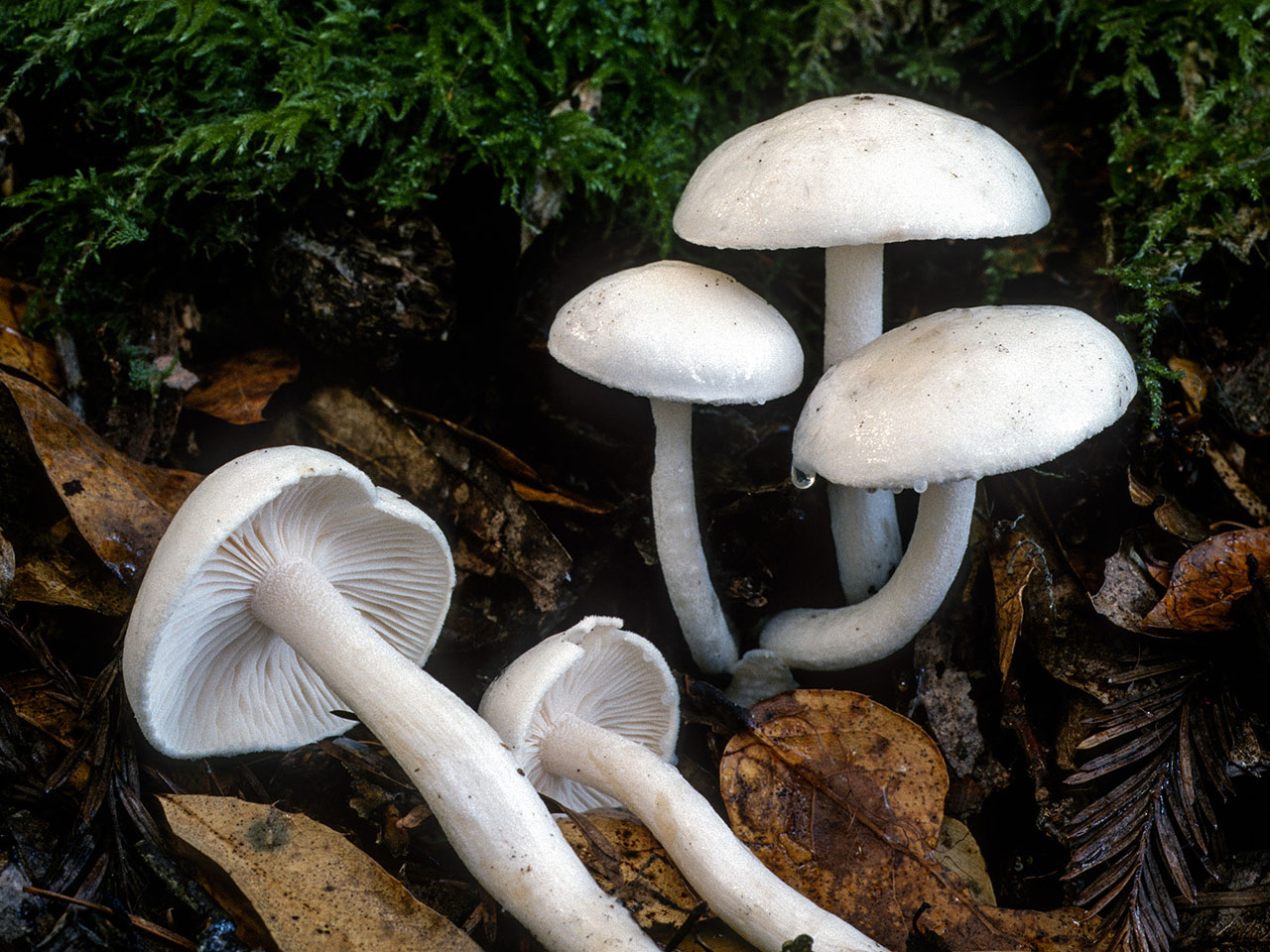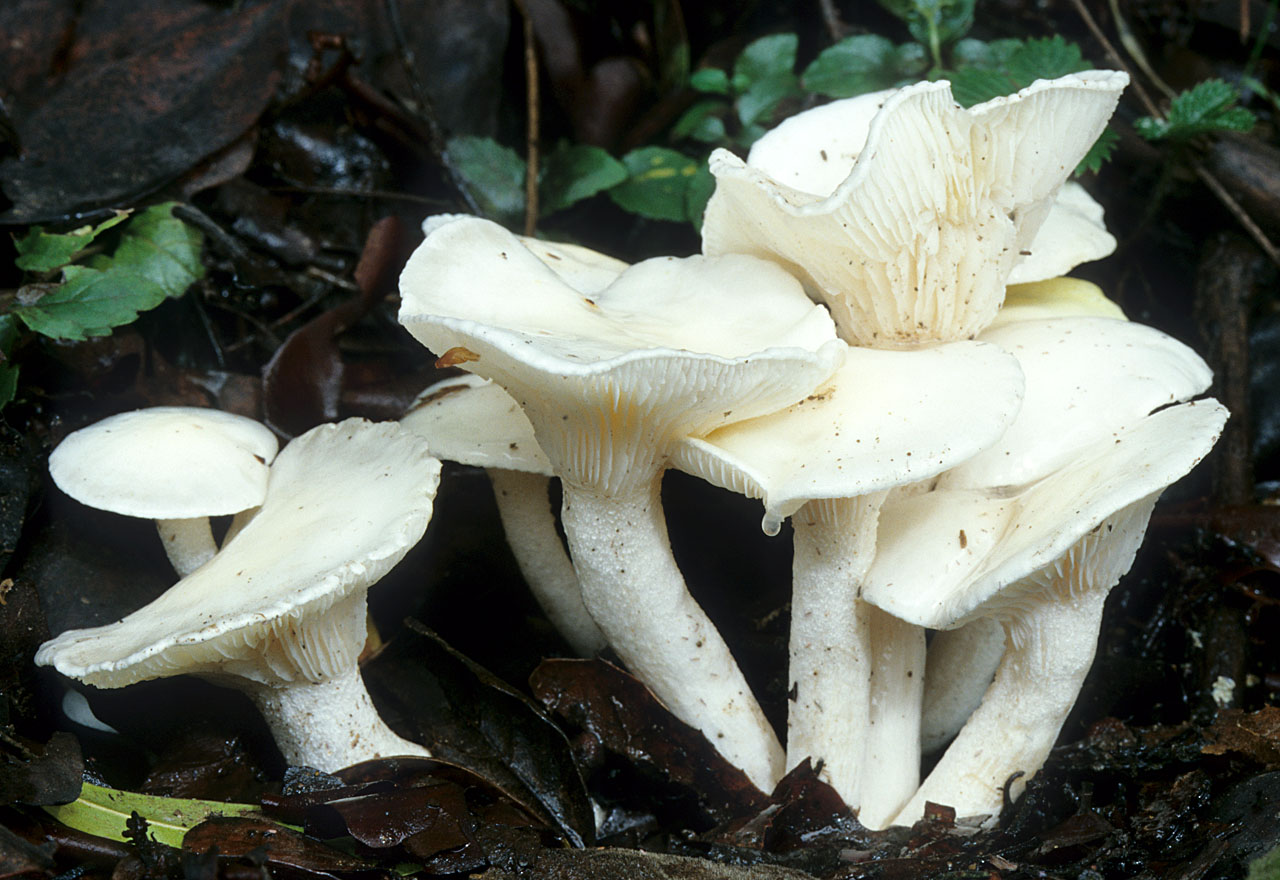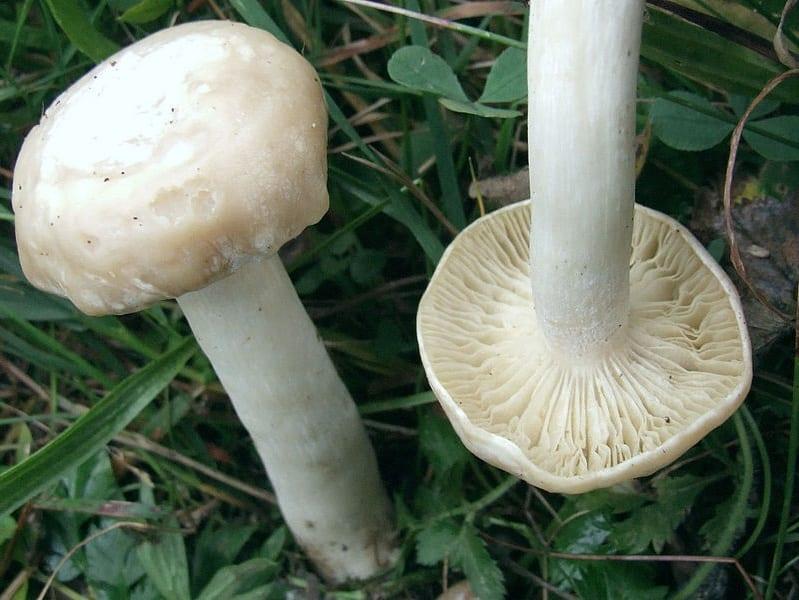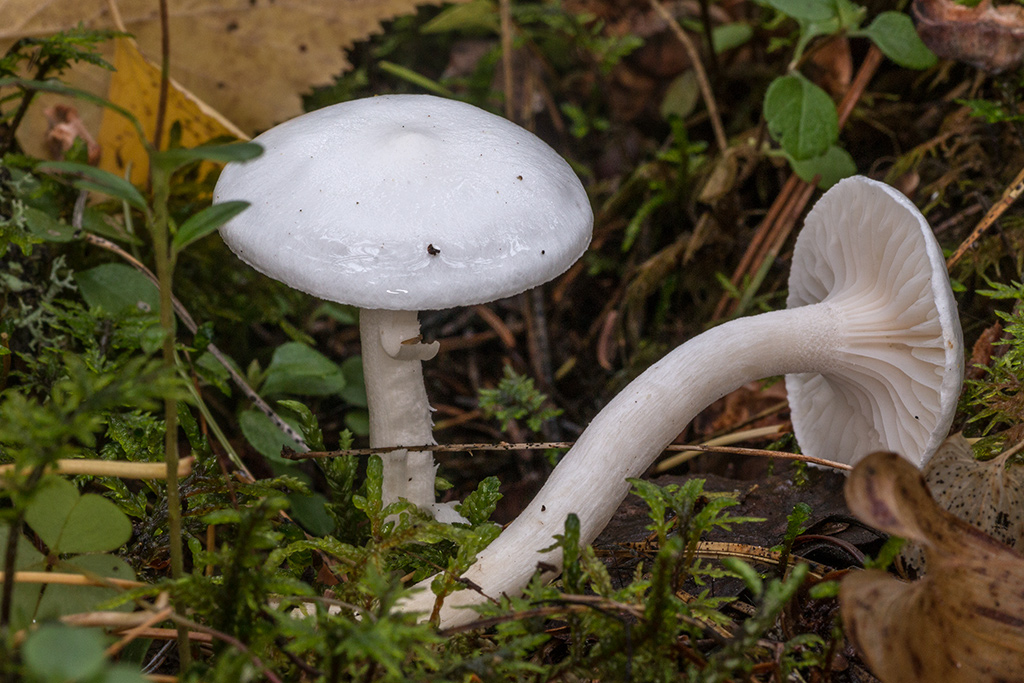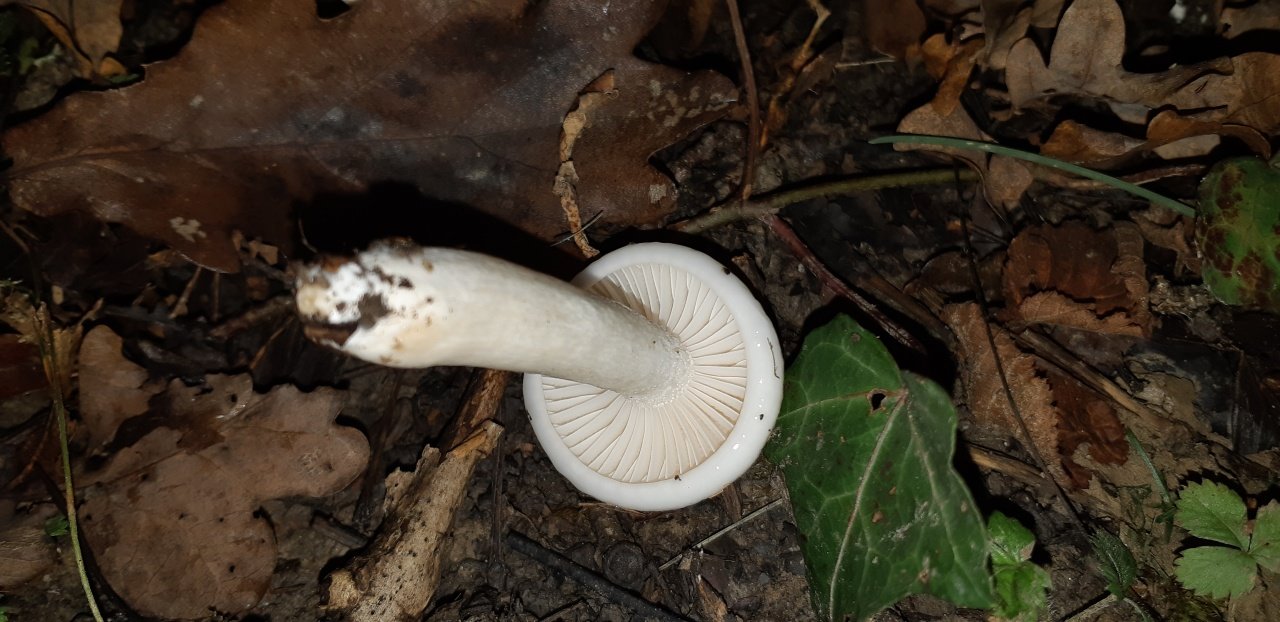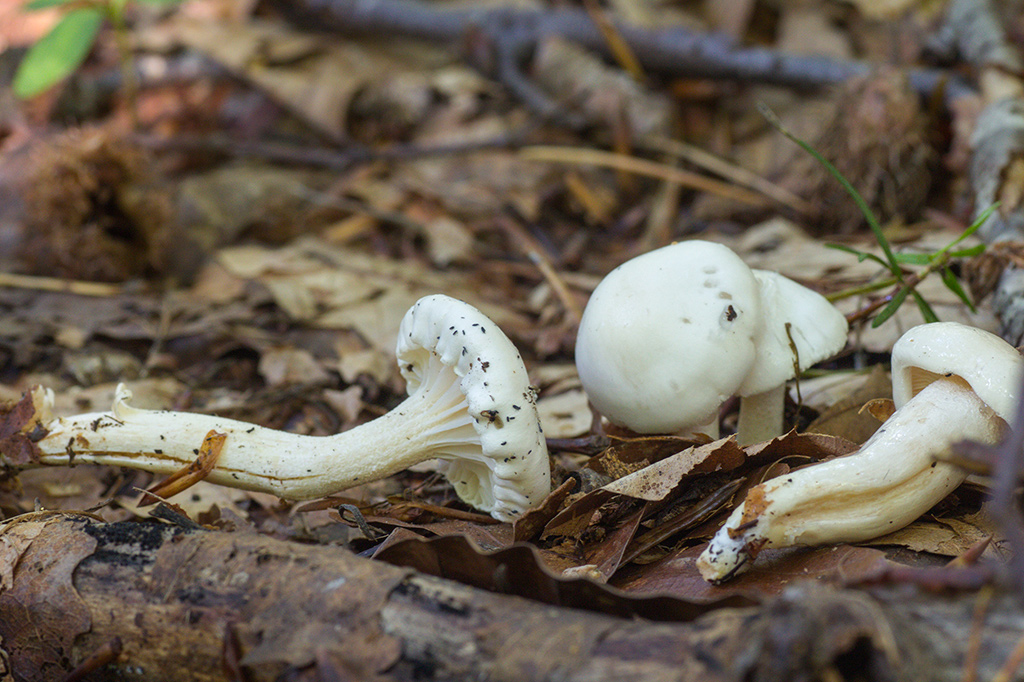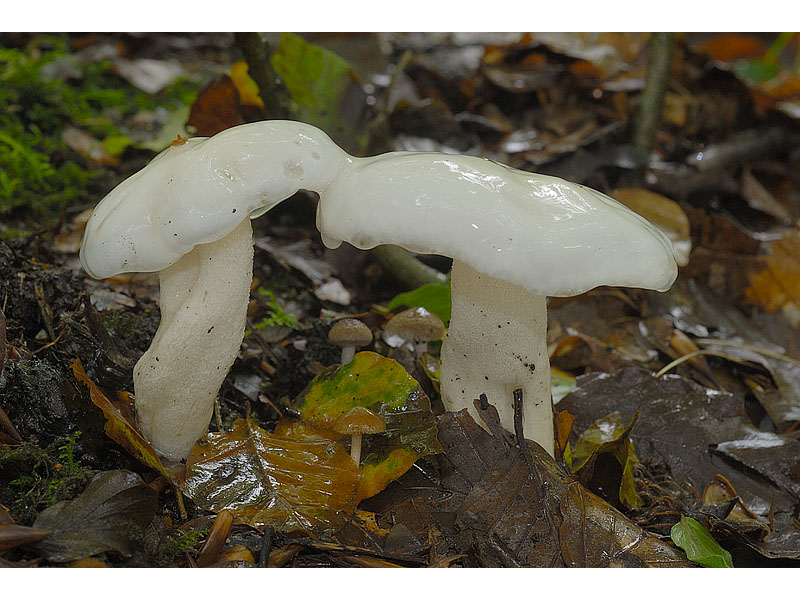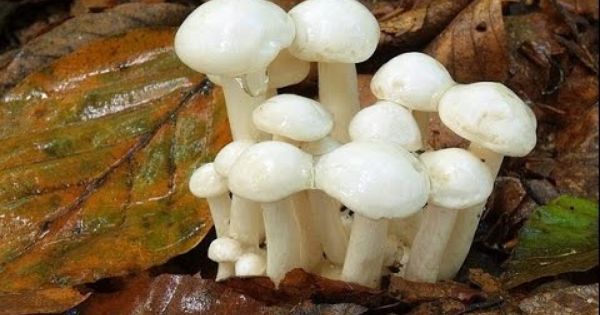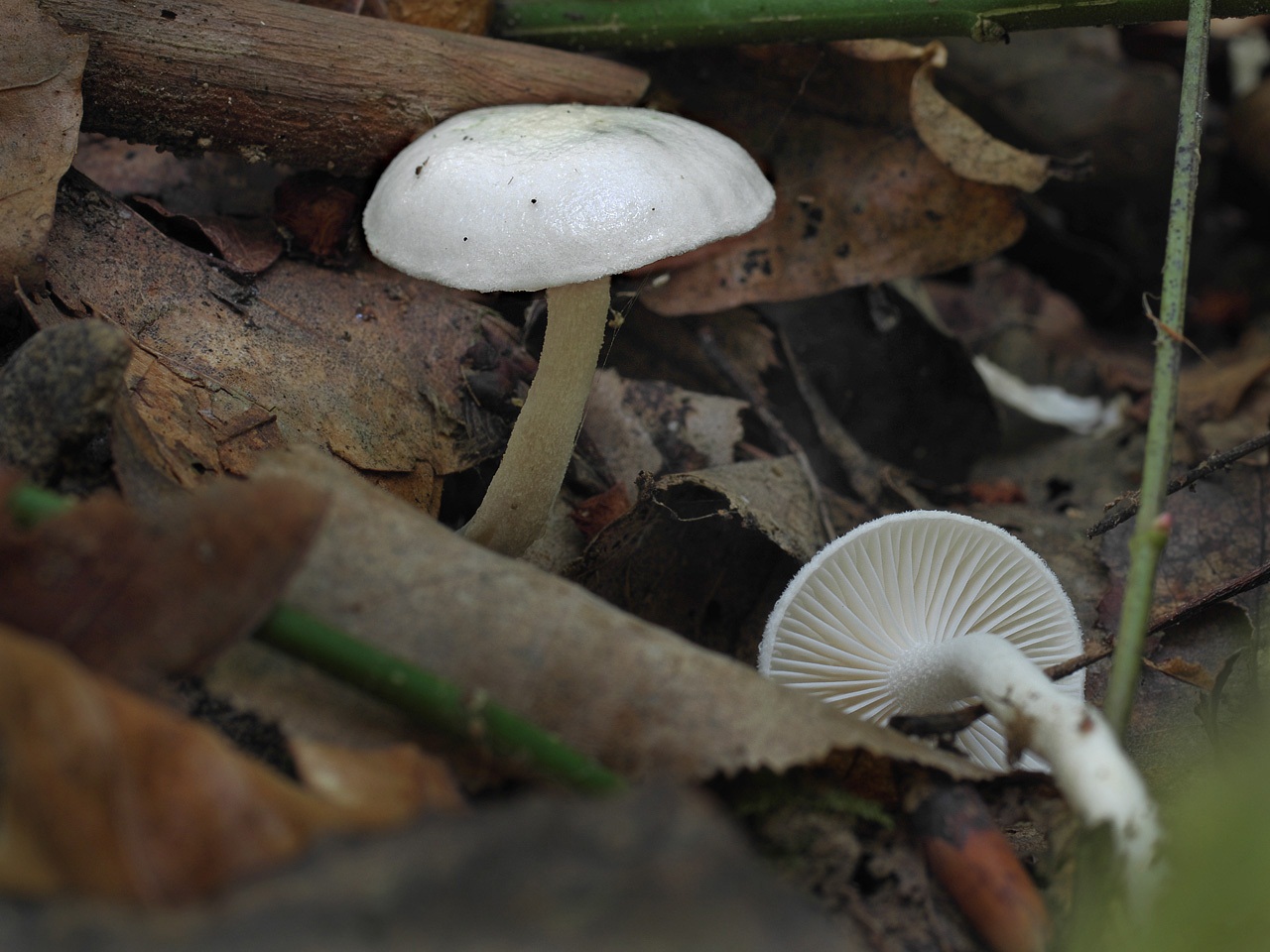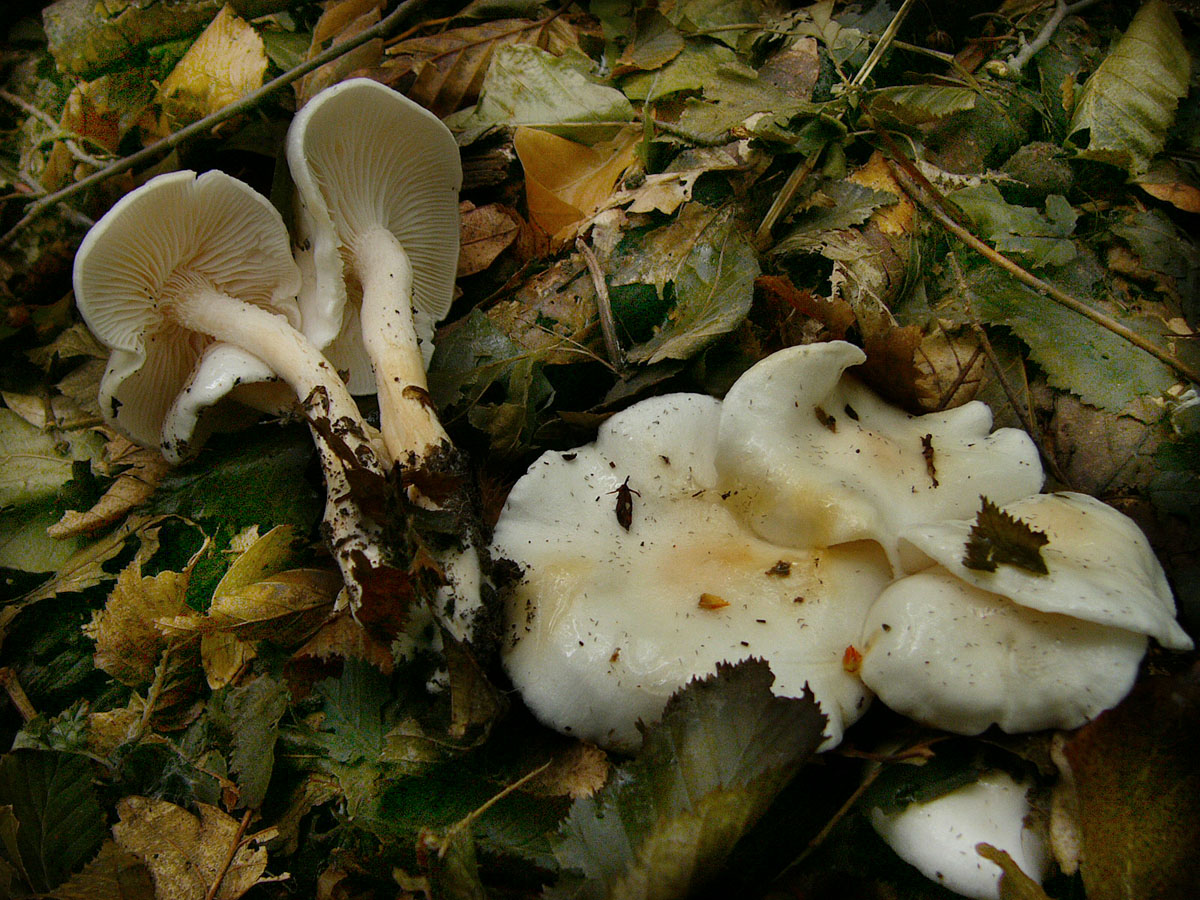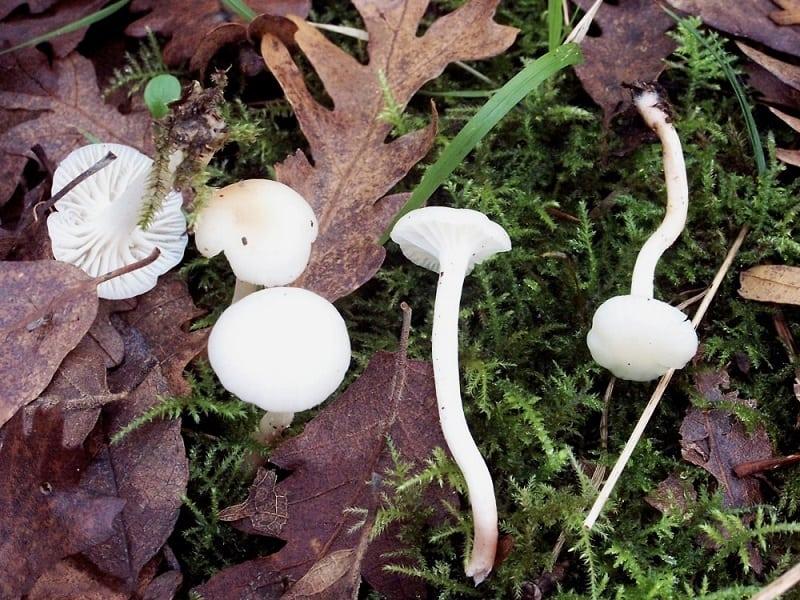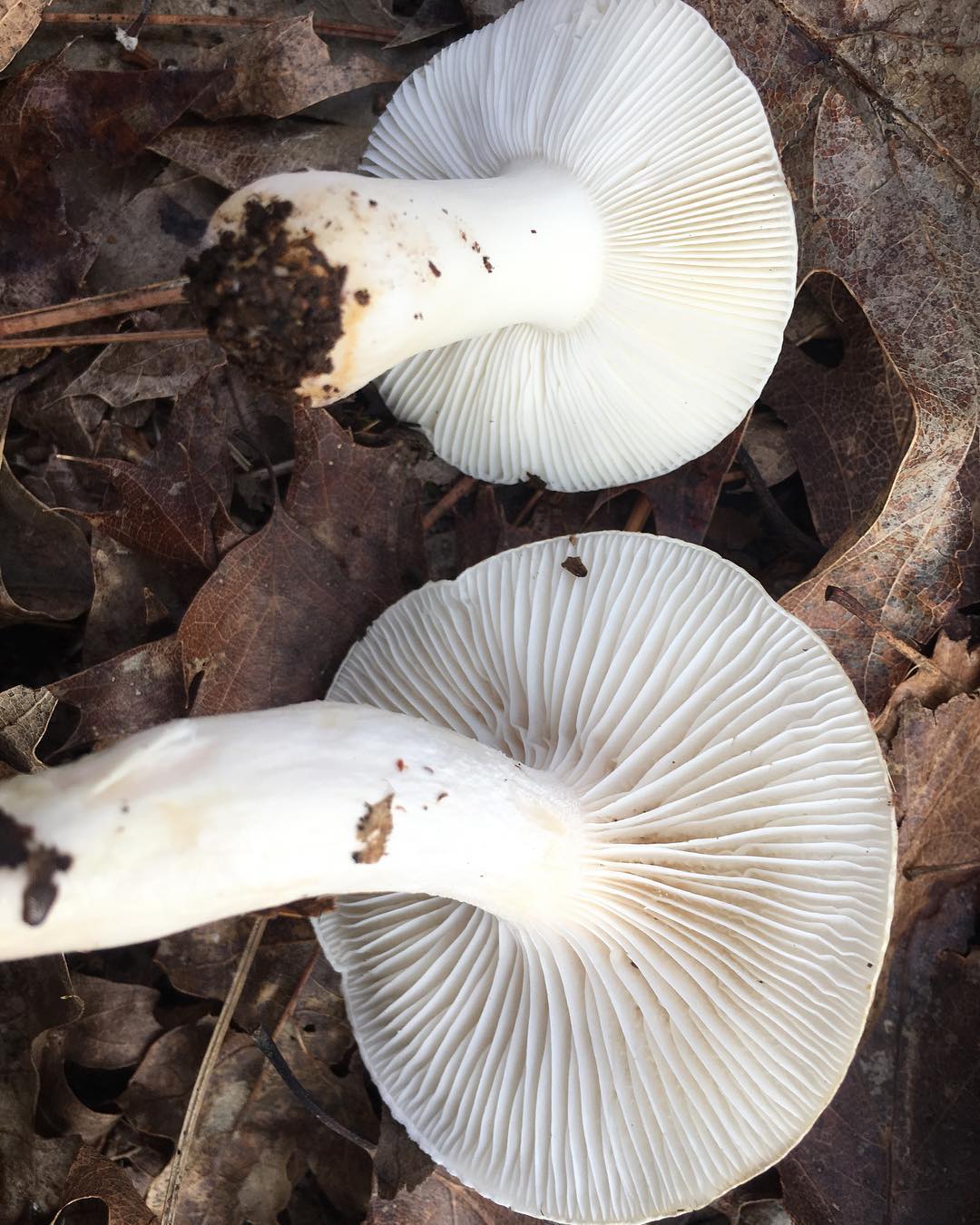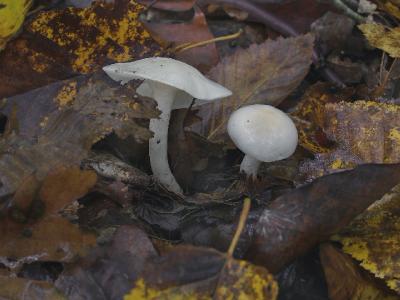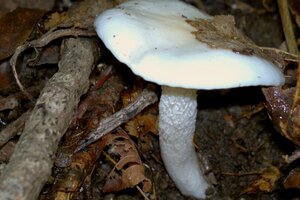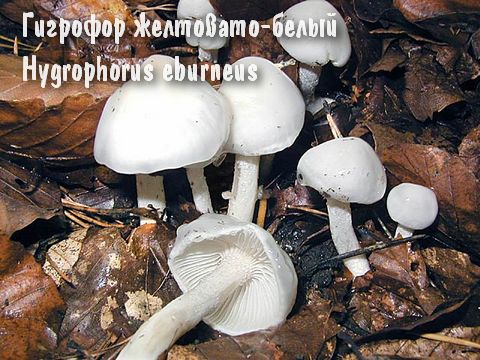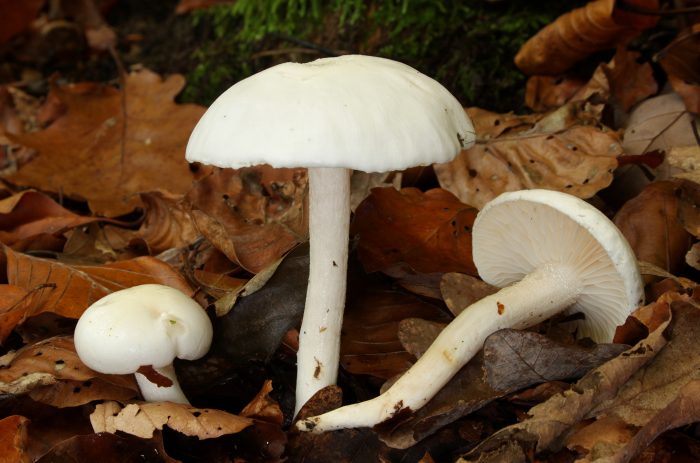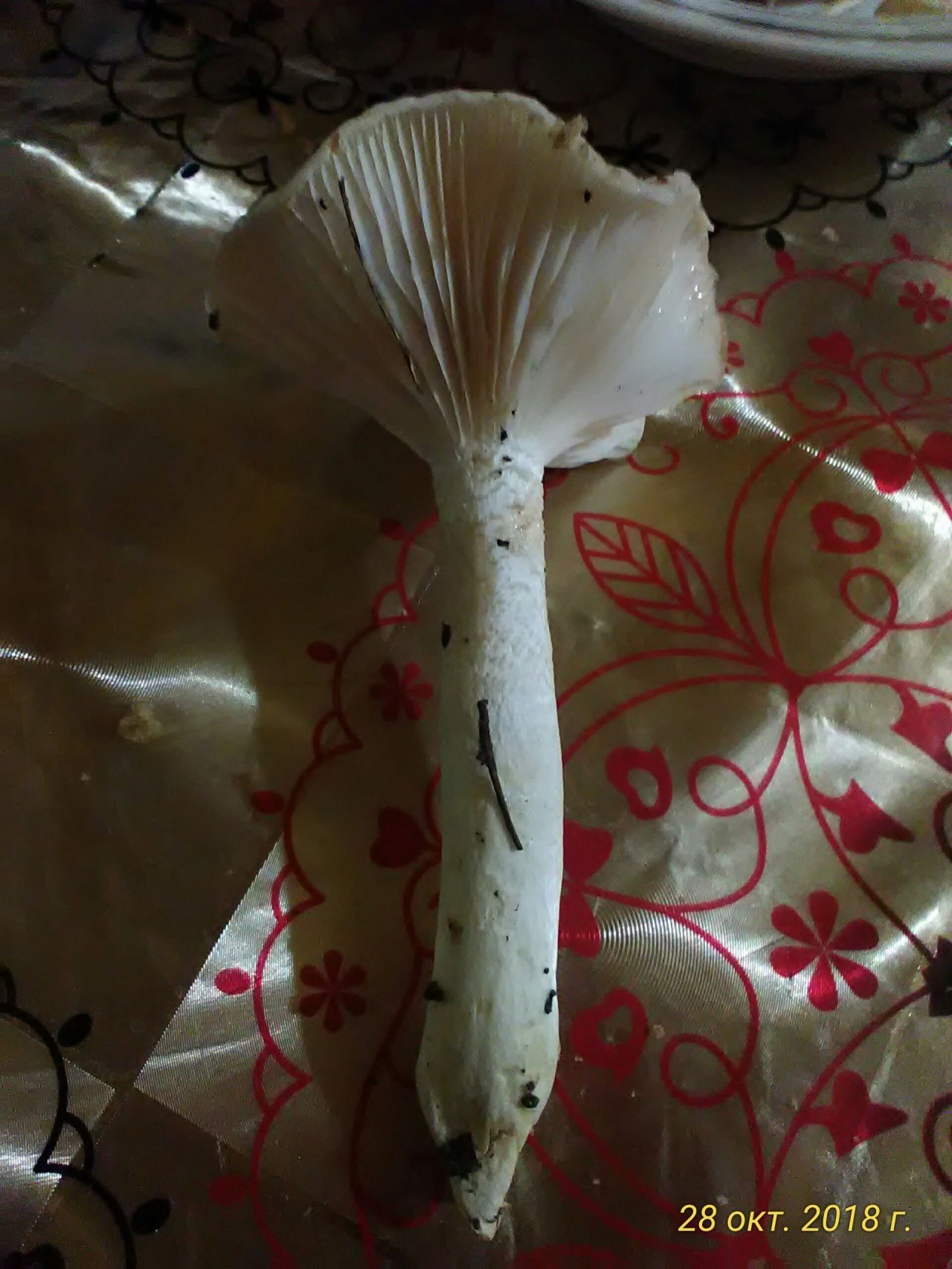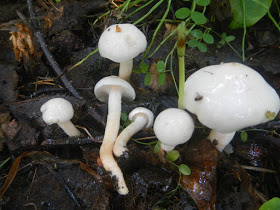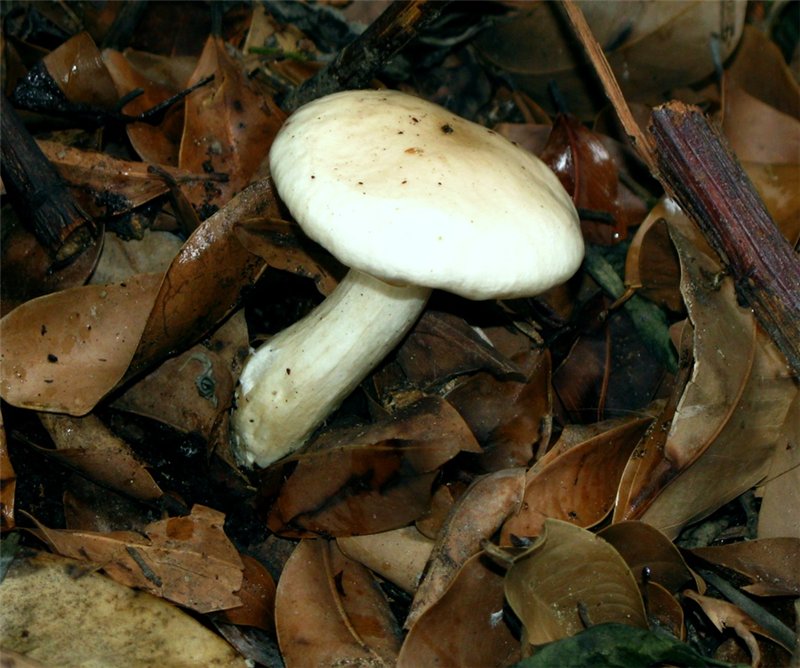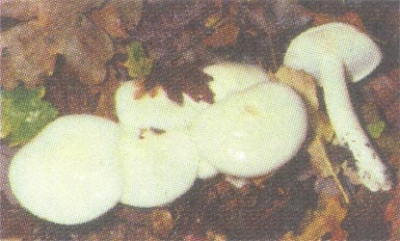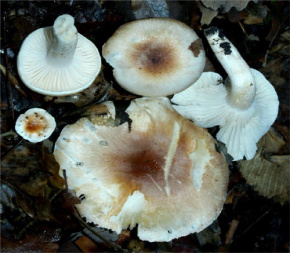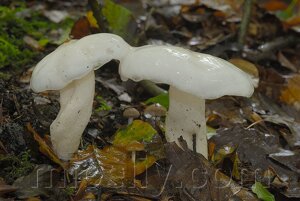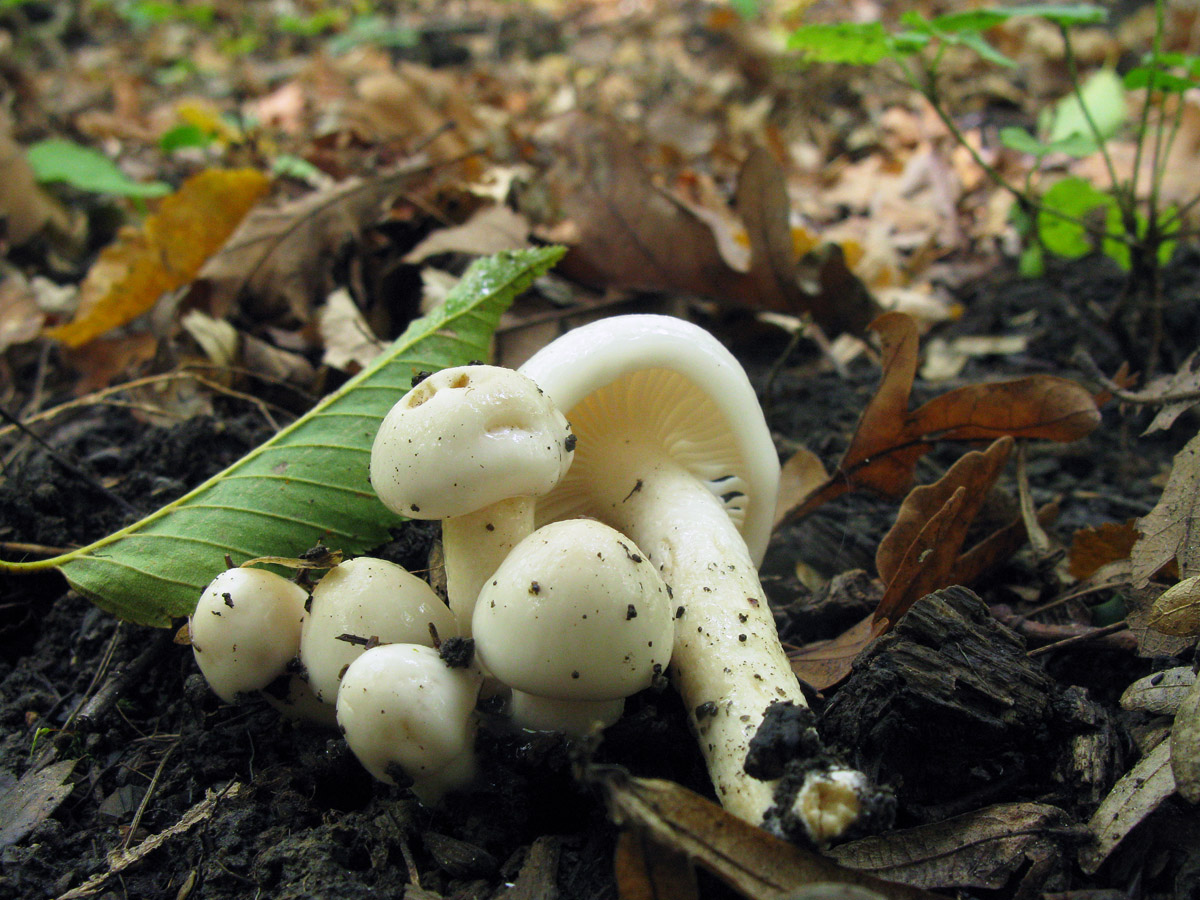Mushroom Gigrofor description.
The name Hygrophorum unites the numerous genus of lamellar mushrooms that are part of the Hygrophoric family. Mushrooms are widespread almost all over the world, but not everywhere they are considered edible. In our latitudes, about 10 different species grow, among which, both edible and inedible. The peculiarity of the genus hygrophor lies in the fact that practically all varieties have small fruit bodies, with convex mucous caps. Consider the descriptions of edible species.
- Snow-white hygrophor.
Tiny mushrooms that are common in meadows and deciduous forest areas. Due to their small size, it is difficult to notice them, so only the most attentive mushroom pickers get the "catch". The cap of the snow-white hygrophor is small, reaching a maximum of 3 cm in diameter. In young mushrooms, the cap has a hemispherical, convex shape, but with age it becomes noticeably flattened, it can become funnel-shaped. In young mushrooms, the color of the cap is white; with age, it acquires a cream or beige shade.
At high humidity, the surface of the caps becomes slimy. A distinctive feature is thin and rare descending plates. The leg grows in height from 3 to 6 cm. The leg is painted in the same shade as the cap. In the context, the pulp is snow-white, with a mild aroma and very thin, almost tasteless. Snow-white gigrofor belongs to the fourth category of edible mushrooms, it can be consumed only after soaking and heat treatment.
- Russula hygrophor.
Another edible variety of the genus Hygrophor. Most often, this mushroom can be found in coniferous forests, birch groves, but not earlier than mid-September, and not later than the end of November. The russula hygrophor has a rich taste and light mushroom aroma, its flesh is white, does not change color during oxidation, but is slightly bitter, so it is soaked before cooking to get rid of the bitter aftertaste.
Pinkish caps can grow from 2 to 9-10 cm, have a hemispherical, convex shape, but eventually become flat, outstretched. On the surface of the cap, small scales are observed closer to the center. The leg is thin, erect or curved, up to 10 cm in height, closer to the cap it is covered with small scales, and at the base it is painted beige. The plates of the mushroom are thick, descending to the stem.
- Gigrofor brown.
This mushroom must be found in damp, parietal and mossy places of coniferous and mixed forests, and it is considered one of the latest, since it begins to bear fruit only at the beginning of October. Mushroom caps are depressed in the center, medium-sized - maximum about 5-6 cm in diameter. The surface of the cap is covered with a thin, sticky, brown, or brown-olive skin, which is slightly lighter at the edges.
Thick, waxy plates are yellow, descend to the peduncle and are sparsely located. Legs are thin, up to 1 cm in diameter, long - up to 10 cm, cylindrical. The leg can be painted in a beige or olive-brown shade, slimy, with a barely noticeable filmy ring - the remains of the bedspread. Brown hygrophor is good for pickling and pickling, can be used boiled.
- Olive brown hygrophor.
An edible and tasty hygrophor, found primarily in coniferous forests. The fruiting season begins in August and ends with the first frost. The legs of this mushroom are white or brown or light olive, covered with ringed scales of a darker shade. Caps can grow up to 10 cm in diameter, slimy and sticky, in dry weather they shine with a glossy shine. The color of the hat is light olive, the shade becomes more saturated closer to the center, and lighter at the edges.
External description of the black hygrophor
The shape of the cap of the black hygrophor is at first convex, over time it becomes prostrate, and even later - depressed.
The surface of the cap is smooth and dry, the edges are wavy. The size of the cap can sometimes be quite decent - about 12 centimeters.
The leg is cylindrical, strong in structure, sometimes narrowed at the base. The leg is covered with thin longitudinal grooves. Under the cap of this lamellar mushroom there are rather wide plates. The plates are rarely located, descending along the leg. The color of the plates is first white, and then becomes bluish. The flesh of the mushroom is fragile, white in color.
Evaluation of the taste of black hygrophors
Many Grigroforians look like inedible mushrooms, as they have an unsightly appearance due to their sticky shell. However, the hygrophors are black - not easy edible, but also delicious mushrooms.
A variety of dishes can be prepared from black hygrophors, dried specimens are especially tasty. If dried hygrophors are immersed in water, then within 15 minutes they swell and take on their original shape. The water that remains after soaking the black hygrophors is recommended for cooking, since mineral substances pass from the mushrooms into it.
Places of growth of black hygrophors
Black hygrophors grow in damp mossy forests. They settle in the undergrowth of mountain coniferous forests. In the Southern Federation, this is a common sight. Black hygrophors bear fruit in autumn.
Other mushrooms of this genus
Gigrofor blushing is an edible mushroom. He has a classic look with a domed hat and a rather long leg. When the mushroom is fully ripe, the cap opens. The color is pink-whitish with yellow spots.
Reddening hygrophors grow in coniferous and mixed forests. These mushrooms bear fruit in August and September. They are found mainly under spruce and pine trees. Although they are edible mushrooms, they have no value because they do not have a special taste and smell.
The poetic gigrofor is an edible mushroom. At first, his hat is spherical, and eventually spread out. The skin is silky, smooth, sticky. The leg is very strong and dense, covered with thin silvery fibers, sticky underneath.
The poetic hygrophor is a good edible mushroom that can be prepared in a variety of ways, as well as dried and preserved. These mushrooms grow in small groups in deciduous forests. Most often they are found under beeches. They can grow in hills and mountainous areas. Fruiting from summer to autumn.
Gigrofor russula is an edible mushroom. His hat is fleshy, initially convex, and then flattened. The surface is wavy, sometimes with deep cracks. The cap is covered with a scaly skin. The color of the cap can be dark pink or purple. The leg is very strong, cylindrical in shape. Russula hygrophors grow in deciduous forests. Most often they are found under oak trees. They grow in small groups. These mushrooms prefer mountainous and hilly areas. They bear fruit in summer and autumn.
Gigrofor olive-white: description and photo
| Name: | Gigrofor olive-white |
| Latin name: | Hygrophorus olivaceoalbus |
| Type of: | Conditionally edible |
| Synonyms: | Sweetheart, Blackhead, Olive white woodlice |
| Specifications: |
|
| Systematics: |
|
Gigrofor olive-white - a lamellar mushroom, part of the family with the same name Gigroforovye. It belongs, like its relatives, to Basidiomycetes. Sometimes you can find other names of the species - sweet tooth, blackhead or olive-white woodlouse. It rarely grows singly, most often it forms numerous groups. The official name is Hygrophorus olivaceoalbus.
What does an olive-white hygrophor look like?
The olive-white hygrophor has a classic structure of the fruiting body, so its cap and leg are clearly pronounced. In young specimens, the upper part is conical or bell-shaped. As it matures, it becomes prostrate and even slightly depressed, but a tubercle always remains in the center. In adult mushrooms, the edges of the cap are tuberous.
The diameter of the upper part of this species is small. The maximum indicator is 6 cm. Even with a slight physical impact, it crumbles easily. The surface color varies from gray-brown to olive, with a more intense shade in the center of the cap. The pulp is of a dense consistency, when broken, it has a white color, which does not change upon contact with air. It has a pleasant mushroom smell and a slightly sweet taste.
On the back of the cap, you can see rare fleshy plates of a white or cream shade, slightly descending to the leg. In some specimens, they can branch out and intertwine. The spores are elliptical, 9-16 (18) × 6-8.5 (9) microns in size. Spore powder is white.
Its leg is cylindrical, fibrous, often curved. Its height reaches from 4 to 12 cm, and its thickness is 0.6-1 cm. Closer to the cap, it is white, and below, olive-brown scales in the form of rings are clearly visible.
Gigrofor is olive-white in damp weather, after frost it brightens noticeably
Where does the olive-white hygrophor grow
This species is widespread in Europe and North America. It can be found especially in coniferous plantings near spruce and pine. Forms whole families in humid places and lowlands.
Is it possible to eat an olive-white hygrophor
This mushroom is conditionally edible, but its taste is rated at an average level. Only young specimens can be consumed entirely. And in adult olive-white hygrophors, only caps are suitable for food, since the legs have a fibrous structure and coarsen over time.
False doubles
This type is difficult to confuse with others due to its special cap color. But some mushroom pickers find similarities with the Persona hygrophor. It is an edible counterpart. The structure of the fruiting body is very similar to the olive-white hygrophor. However, its spores are much less, and the cap is dark brown with a grayish tint. Grows in deciduous forests. The official name is Hygrophorus persoonii.
Gigrofor Persona forms mycorrhiza with oak
Collection rules and use
The fruiting period for this species begins at the end of summer and lasts until late autumn under favorable conditions. Gigrofor olive-white forms mycorrhiza with spruce, therefore it is under this tree that it is most often found. When picking, it is necessary to give preference to young mushrooms, since their taste is much higher.
This species can also be pickled, boiled and salted.
Conclusion
Gigrofor olive-white, despite its edibility, is not very popular with mushroom pickers. This is primarily due to the small size of the mushroom, average taste and a slippery layer of the cap, which requires more thorough cleaning. In addition, its fruiting period coincides with other more valuable species, so many lovers of quiet hunting prefer the latter.
Distinctive features of a yellowish-white hygrophor
This mushroom can be easily recognized due to its ivory coloration. The gigrofor is yellowish-white and is of medium size. The diameter of the cap ranges from 5 to 10 centimeters. In the process of growth, the shape of the hat is concave upward, but over time, the hat becomes flat, and its edges are tucked up.
During high humidity, a thick layer of mucus forms on the cap, which greatly complicates the process of collecting mushrooms. If you rub the mushroom between your fingers, you get a mass that resembles melted soft wax.

The mushroom plates are white, they are rarely located, going down to the stem. The shape of the leg is cylindrical, it is narrowed downwards. Spores are smooth, colorless, elliptical.
Distribution of a yellowish-white hygrophor
Gigrofor yellowish-white - a little-known mushroom that is not widespread. The harvest time for these mushrooms is from August to November. At this time, yellowish-white hygrophors are found in deciduous and mixed forests.
They grow in temperate regions with warm climates. Most often, yellowish-white hygrophors are found under beeches, oaks and on calcareous soils. These mushrooms are widespread in Europe, North America and North Africa.

Useful qualities of a yellowish-white hygrophor
These mushrooms were very useful in medicine: a large amount of biologically active substances, such as fatty acids, which have antifungal and bactericidal effect, were isolated from their fruit bodies.
Eating yellowish-white hygrophors
These mushrooms are quite edible, while they do not have to be pickled and salted, but can be eaten fresh.
In China, a popular drink is made from yak milk with the addition of a yellowish-white hygrophor.

Useful properties and contraindications
- normalizes the work of the central nervous system;
- improves the functioning of the gastrointestinal tract;
- restores the lymphatic system thanks to biologically active components;
- prevents obesity;
- reduces the risk of complications in type 2 diabetes mellitus;
- strengthens the body's immune defenses;
- normalizes hepatic function;
- improves the functioning of the organs of the genitourinary system;
- increases the activity of the optic nerve.
Any drug not only has a positive effect on the body, but can provoke a negative reaction.
Important! The use of hygrophors is prohibited for people who have problems with metabolic processes, allergy sufferers, suffering from epileptic seizures. In some cases, medical staff recorded the development of hypervitaminosis in people after eating mushrooms .. The fruiting body is rich in protein, therefore, kidney disorders are often observed
In addition, fungi accumulate toxic substances. Experts advise to refrain from preparing fruits collected near highways, factories. This can lead to serious poisoning of the body. It is forbidden to eat any mushroom dishes for pregnant and lactating women, as well as children under 12 years old
The fruit body is rich in protein, therefore, violations in the functioning of the kidneys are often observed. In addition, fungi accumulate toxic substances. Experts advise to refrain from preparing fruits collected near highways, factories. This can lead to serious poisoning of the body. It is forbidden to eat any mushroom dishes for pregnant and lactating women, as well as children under 12 years old.
Fragrant gigrofor
Family: Hygrophoraceae.
Synonyms: fragrant hygrophor, fragrant hygrophor, gray hygrophor.
Description. The cap is 4-10 cm in diameter, convex, then flat, often with a flat tubercle or depressed, smooth, slimy or slightly sticky, gray, yellowish-gray, sometimes with an olive tint, lighter along the edge (to whitish), sometimes off-white. The plates are rare, thick, white, grayish with age. The pulp is white or grayish, with a strong smell of almonds or anise (or a combination thereof), with an expressionless taste. Stem 5-15 X 0.6-2 cm, cylindrical or narrowed towards the base, dry or wet, with pubescence, mealy-granular bloom or small yellowish scales, at first white, grayish with age.
Fragrant gigrofor is found in coniferous and mixed forests, on calcareous soils, often among mosses, throughout the forest zone of Russia, not often and not abundantly, it forms mycorrhiza with spruce.
Fruiting in August-October.
Similar species. The combination of characteristic odor (anise-almond) and color does not allow this hygrophor to be confused with its other relatives.
Medicinal properties. Studies on antioxidant activity have shown the presence of at least five organic acids: oxalic, citric, malic, quinic and fumaric.In tests for antimicrobial activity, the fungus showed inhibition of the growth of a wide range of bacteria pathogenic for humans: Escherichia coli, Enterobacter aerogenes, Salmonella typhimurium, Pseudomonas aeruginosa, Staphylococcus aureus, S. epidermidis and Bacillus subtilis. Antifungal activity has been shown against the yeast pathogens Candida albicans and Saccharomyces cerevisiae.
Cooking use. An edible mushroom with low palatability, it is eaten fresh, pickled and salted.

